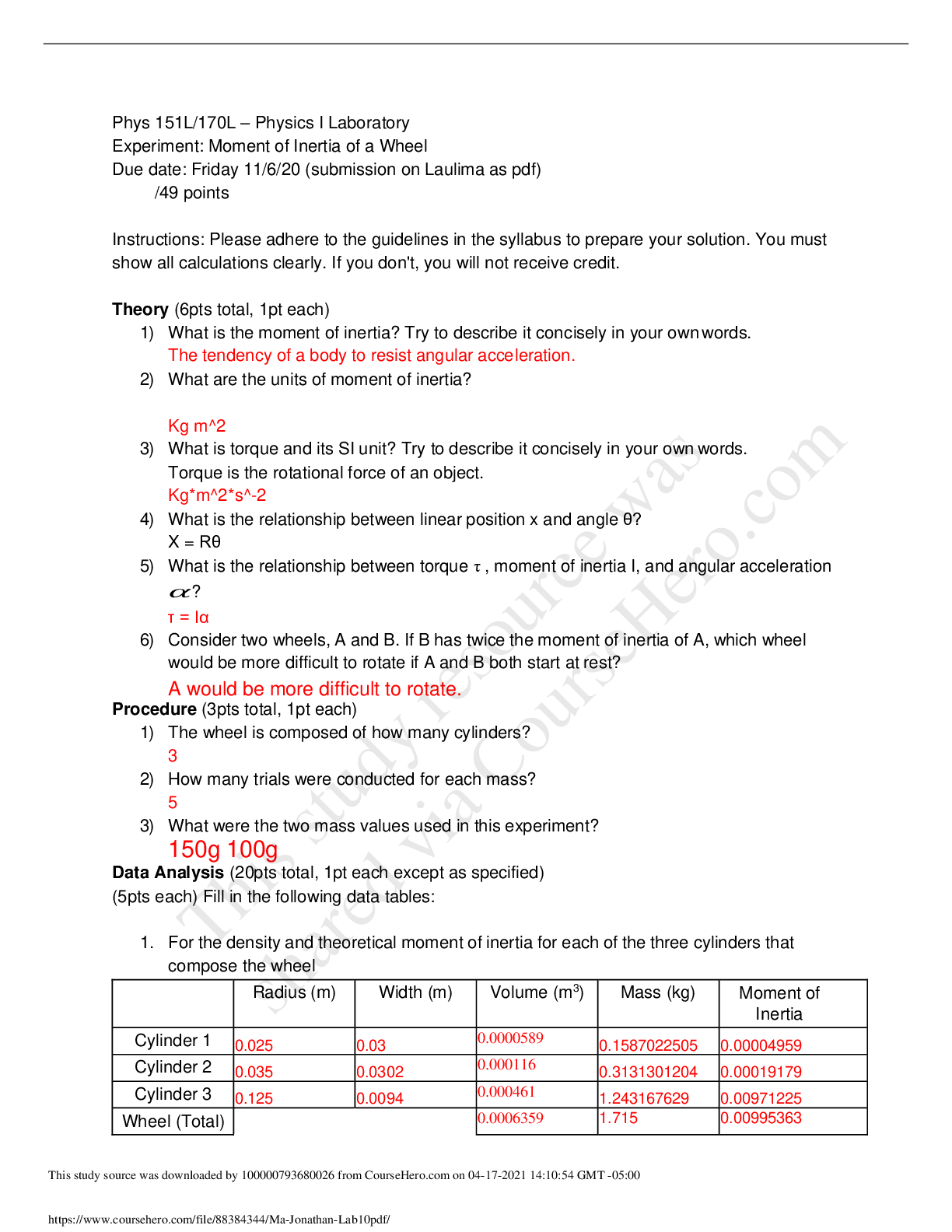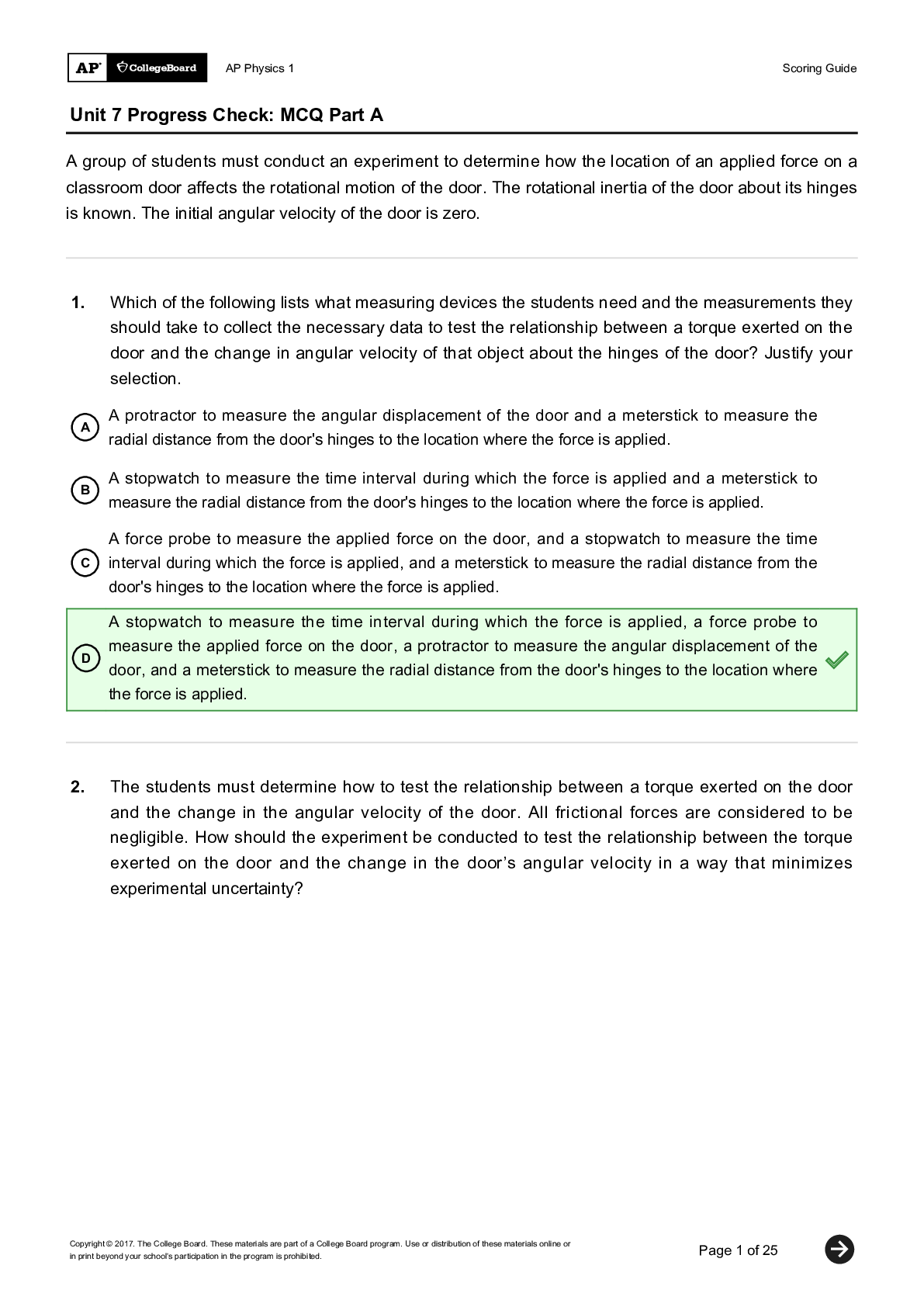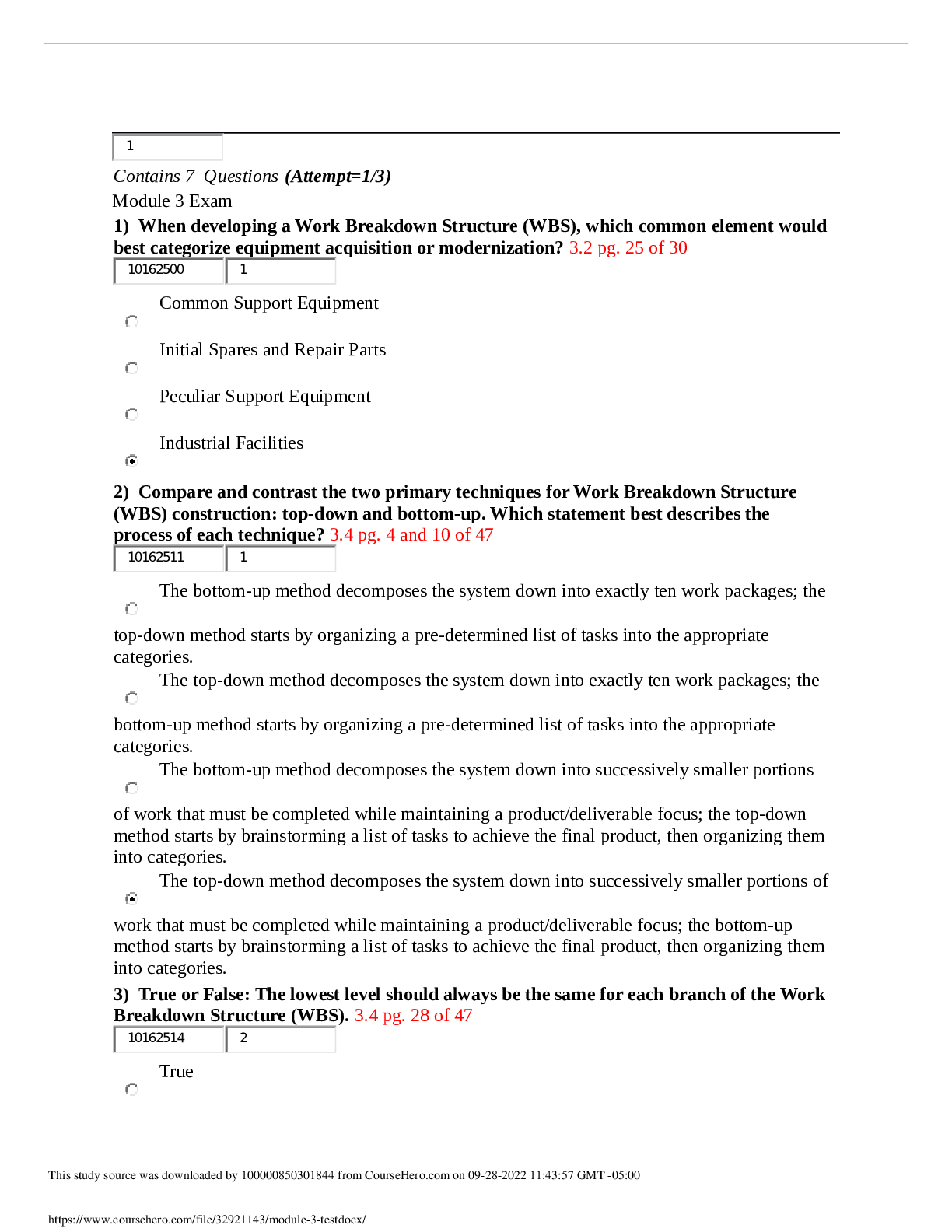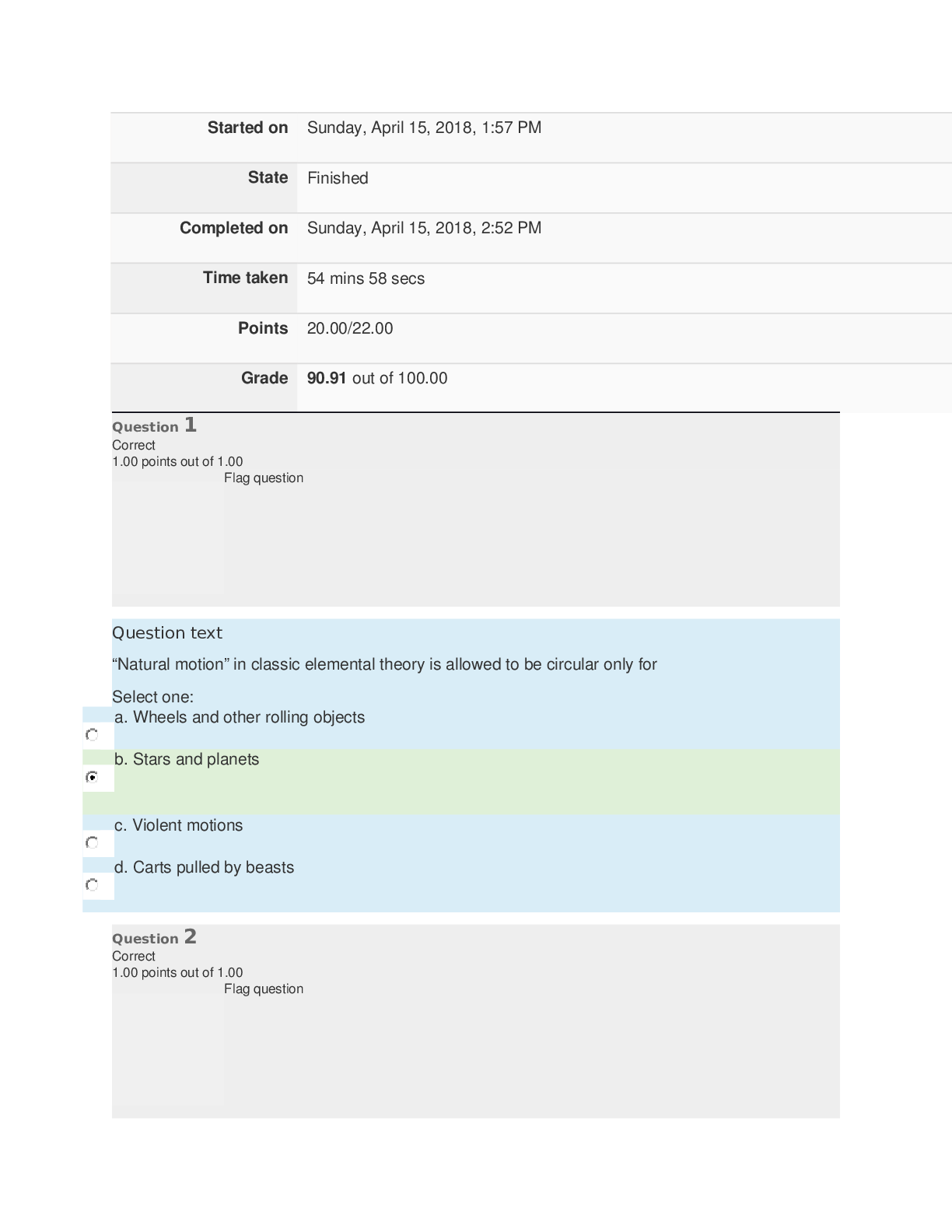Physics > QUESTIONS & ANSWERS > Mountain View College - PHYSICS 1415VLab_Projectile_Motion_Physlet-2 projectile motion (All)
Mountain View College - PHYSICS 1415VLab_Projectile_Motion_Physlet-2 projectile motion
Document Content and Description Below
Virtual Lab: Projectile Motion Name(s): Date: Please use a font color other than black, red or green. Theory: A projectile is an object that moves in two dimensions, in other words, it moves vert... ically and horizontally at the same time. A special characteristic of a projectile is that its motion in the vertical direction is independent of its motion in the horizontal direction. If air resistance is small enough to be ignored, then the only force acting on a projectile after launch, is the vertical force of gravity. Therefore, in the absence of air resistance, the horizontal component of the projectile’s velocity does not change. In the vertical direction, the force of gravity causes a constant downwards acceleration of 9.8 m/s2 . The projectile’s motion in the vertical direction can therefore be analyzed using kinematic equations that are based on constant acceleration such as: y=y0+v0 y t− 1 2 gt 2 [Equation1] where: y = change in height of the projectile (in meters) y0 = initial height of the projectile (before it was launched) voy = initial velocity of the projectile in the vertical direction g = acceleration due to gravity (9.8 m/s2 ). We put a negative sign in front of g to indicate that we have chosen upwards as the positive direction, and g is directed downwards. t = time in seconds since the launch of the projectile Projectile motion is seen when you throw a ball across to someone, when you hit a baseball or a tennis ball, when water emerges out of a fountain and so on. If a projectile is launched at an angle, we can use trigonometry to find its starting velocities in the horizontal and vertical directions. The figure below explains how. Fig 1. Velocity components and the trajectory of a projectile Fig. 1 shows a red ball being launched with an initial or starting velocity of v0 meters per second at an angle of measured from the horizontal. This initial velocity can be broken down using trigonometry into its horizontal component (v0cos ) and its vertical component (v0sin). After finding the vertical and horizontal components, different kinematic equations can used to accurately predict the projectile’s path or trajectory. If air resistance is small enough to be ignored (generally the case for a small, heavy ball), then the velocity in the horizontal direction does not change and it is calculated using the equation: Horizontal velocity = v0x = v0cos [Equation 2]. Since the horizontal velocity is constant, we can write another useful equation involving velocity, distance traveled in the given direction (which is the displacement), and time: Horizontal velocity=v0 cosθ= Distance time [Equation3] On the other hand, for motion in the vertical direction, we can derive a useful equation by rearranging equation [1] and substituting v0y = v0sin (from Fig. 1) to get: [Show More]
Last updated: 2 years ago
Preview 1 out of 9 pages

Buy this document to get the full access instantly
Instant Download Access after purchase
Buy NowInstant download
We Accept:

Reviews( 0 )
$6.00
Can't find what you want? Try our AI powered Search
Document information
Connected school, study & course
About the document
Uploaded On
Apr 03, 2021
Number of pages
9
Written in
Additional information
This document has been written for:
Uploaded
Apr 03, 2021
Downloads
0
Views
93


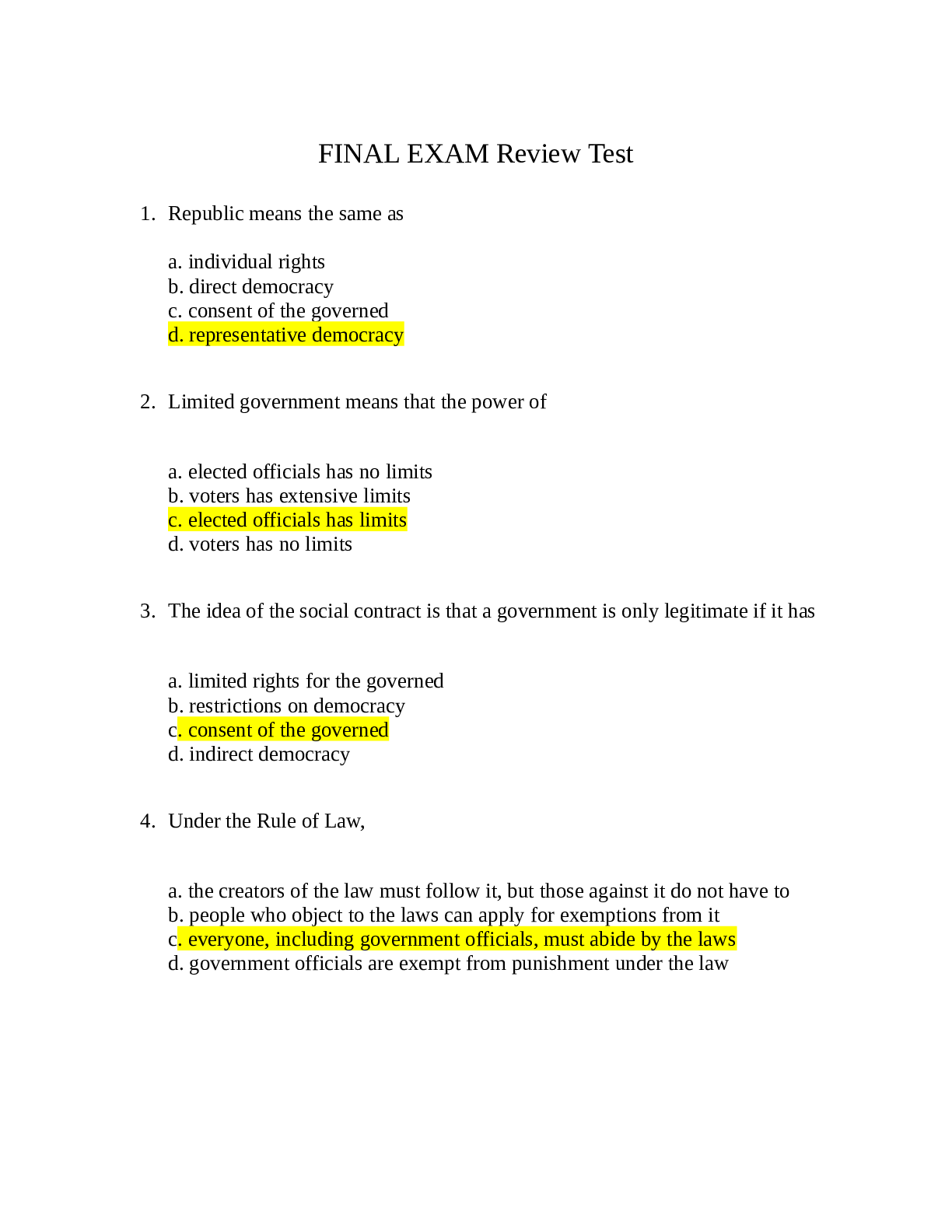
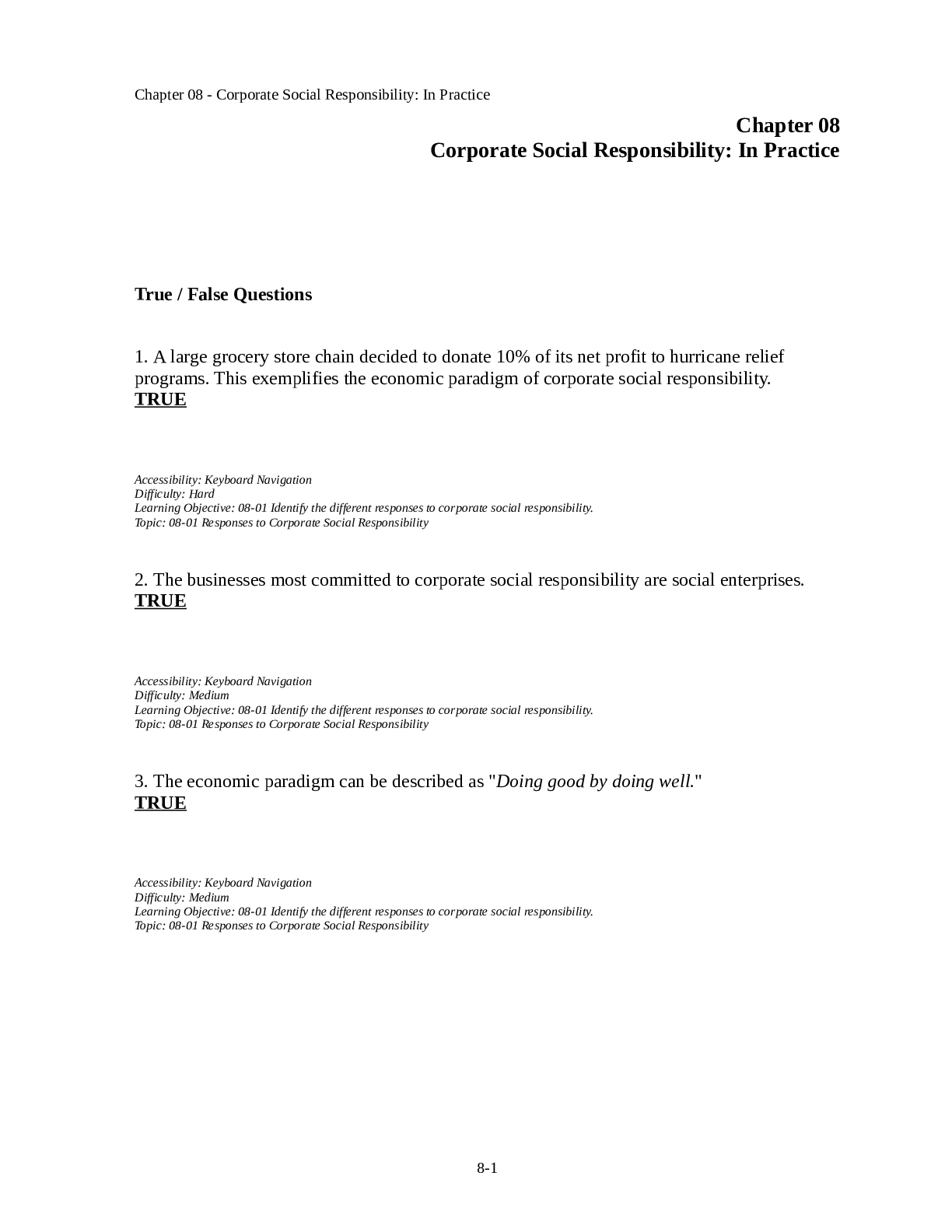

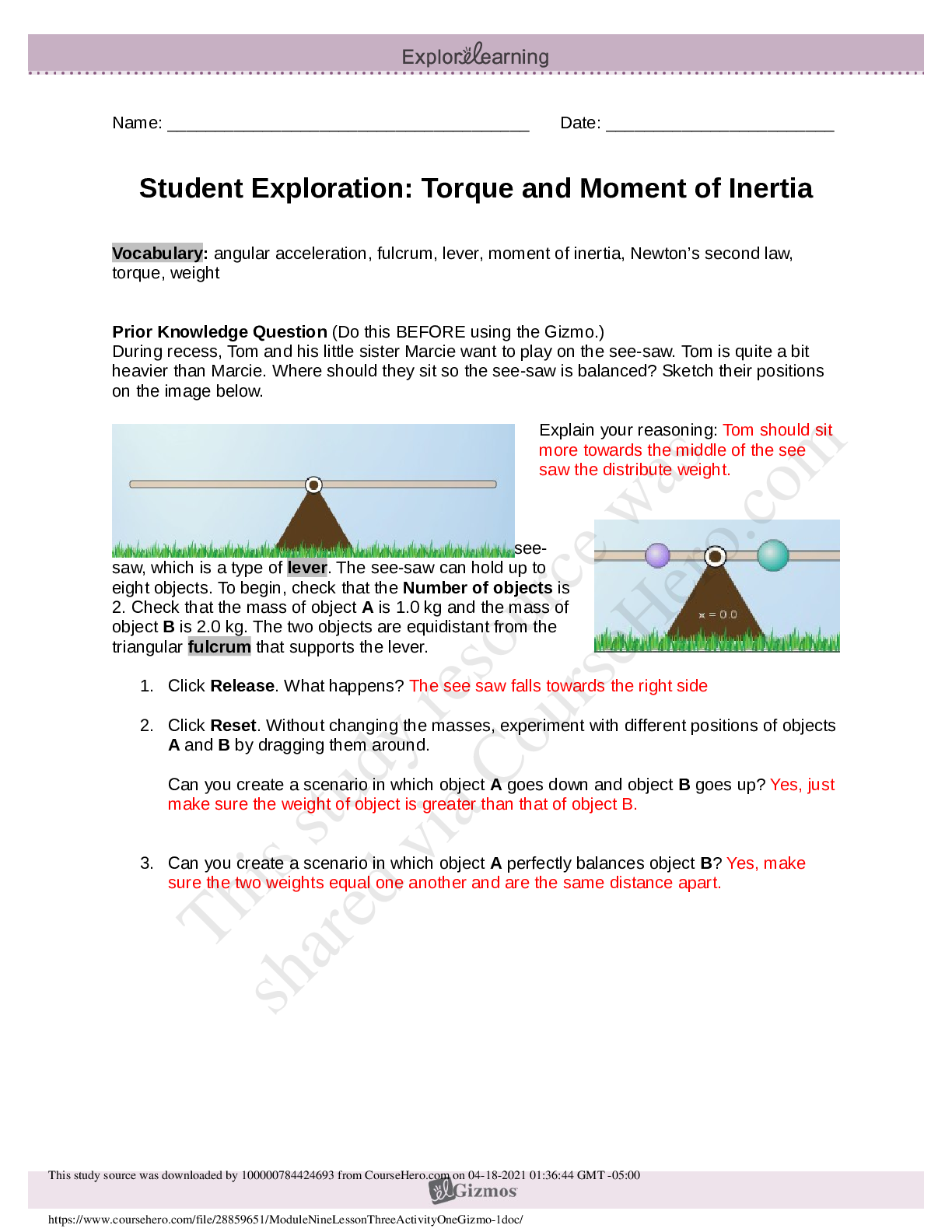



.png)
